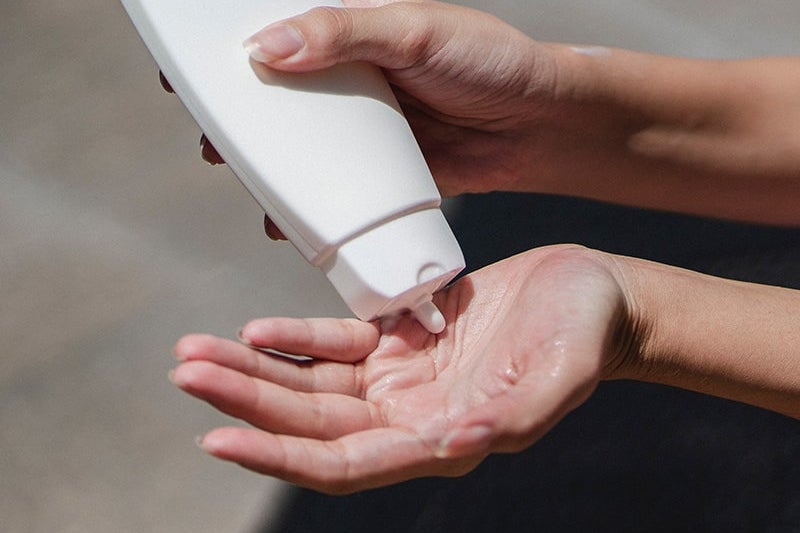Advice on how to choose, apply and store sunscreen
How to choose, apply and store sunscreen

Australia has the highest rate of skin cancer in the world with 2 in 3 Australians diagnosed in their lifetime.
But with the right ‘tools’, protecting your skin with sunscreen is simple.
Apply the right amount, at the right time, and reapply regularly to stay safe in the sun.
To work properly, sunscreen should be used exactly as directed on the label – just like any other medicine.
Sunscreen is effective at preventing skin cancer, but it should always be used in combination with broad-brimmed hats, sun protective clothing, sunglasses and shade.
How to apply sunscreen – a step-by-step guide
Like any medicine, sunscreen works best when it’s used correctly. Following the instructions on the label will ensure you get the best protection, helping to reduce your risk of skin damage and skin cancer.
Quick steps to apply sunscreen correctly:
- Check the UV – use sun protection when the UV is 3 or above.
- Use enough – the average adult needs about 35 mL (around 7 teaspoons) for full-body coverage – at least one teaspoon each for your arms, legs, front, back, face/neck/ears.
- Apply 20 minutes before you go outside (on clean, dry skin).
- Reapply every 2 hours, and immediately after swimming, sweating or towel-drying.
- Use sunscreen in combination with other SunSmart strategies for the best protection against the sun. Slip on protective clothing, Slop on broad-spectrum, water-resistant SPF50 or SPF50+ sunscreen, Slap on a broad-brimmed hat, Seek shade and Slide on sunglasses.
How to store sunscreen safely
Check the storage conditions recommended on the label. Typically, sunscreen should be stored below 30ºC in a cool, dark place. Ideally, not in a car on a hot Aussie summer day.
If sunscreens are stored incorrectly, the oil and water ingredients will begin to separate, leaving a gritty, lumpy consistency that may affect how it is applied to skin, as well as the effectiveness of its UV protection.
Sunscreens expire, so check the date of expiry
Check the expiry date of the sunscreen. Most sunscreens last about two to three years. If it’s out of date, it’s unlikely to be effective.
Add sunscreen to your daily routine and protect your skin – it’s that simple.
Which sunscreen should I use?
The best sunscreen is the one you will use regularly. It’s that simple.
Choose a sunscreen that best suits your lifestyle and is easy to reapply (pump-dispensing bottles can be a great option).
- Sensitive skin? Look for fragrance and paraben-free products.
- Hate sunscreen residue on your hands? Look for a gel that soaks in quickly.
- Don’t like the feeling on your skin? Try a dry touch sunscreen that won’t leave your skin greasy.
- Expecting to sweat? Try formulas that are sweat resistant or dry touch.
Although use of any sunscreen is preferred over not using sunscreen at all, we strongly advise against using aerosol sunscreens. A 2021 study found that typical wind conditions at Australian beaches can cause up to 28–93% of sunscreen to be lost during application (20 kph wind). As a result, achieving the SPF protection listed on aerosol sunscreen could require spraying for up to 250 seconds per limb to achieve the required amount of SPF protection.
We recommend lotions and creams: they’re easy to apply, longer lasting and provide even, reliable protection.
Not all sunscreens contain the same ingredients. If your skin reacts to one sunscreen, talk to a chemist or doctor about choosing one with different ingredients.
For maximum protection, look for SPF50 or SPF50+, broad-spectrum and water-resistant sunscreen.
Before using a new sunscreen, patch test on a small area of skin to check for any reaction.
Chemical vs mineral sunscreen explainer
Sunscreens protect your skin by reflecting and/or absorbing UV rays. Find out more about chemical vs mineral sunscreens.
How can I avoid a sunscreen reaction?
Most people can use sunscreen without any issues, but if you have sensitive skin, it’s a good idea to do a patch test first.
- Apply a small amount of sunscreen to the inside of your forearm
- Watch for redness, itching or irritation before using it on the rest of your body
This quick patch test can help you spot a sensitivity before you apply it everywhere.
Keep in mind, some allergies only show up after repeated use – so keep an eye on any changes to your skin.
If you already know you’re allergic to a certain ingredient, check the label and avoid sunscreens that contain it.
Be SunSmart and keep safe in the sun.
